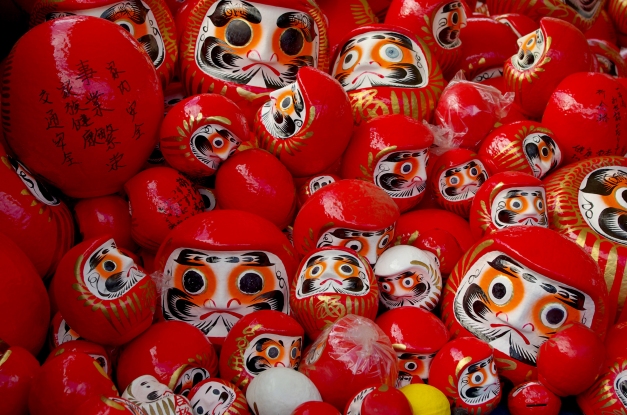Even more from the series of Japanese short films about crafts and manufacturing, which was featured yesterday: this time the videos feature the making of clockwork and tin toys, daruma (達磨, the hollow good luck dolls supposedly modelled after Bodhidharma, the founder of Zen Buddhism), oil pastel crayons, oil paint for artists, and mosquito coils.
The film about daruma shows equally fascinating traditional hand-made techniques, and slightly more industrial manufacturing of them. Even so, they’re all still finished individually just like the other items shown in these videos, the paint and the mosquito coils included. The pastel one is a bit tedious at the start, but if you’re an artist like me or otherwise just get excited about colours, stick with it and the one about paint for some huge, lush blobs of intense, glossy pigment erotica. The film about mosquito coils is initially rather alarming because despite them working with insecticide all day, not a single person is wearing a mask or gloves. A little research, however, showed that pyrethrum and pyrethrins derive from chrysanthemum flowers (as shown in the film) and are so safe to humans and other mammals that a person would have to ingest many grams of the substance to even get ill. The film also does a little introduction to anti-mosquito incense, which was in fact invented by a Japanese gentleman in the 1890s, although it was his wife who came up with the improved coiling version still in use today. Guess who usually gets the credit, though?
And since we’re on the subject of mosquito coils– how often does that happen?– what a great excuse for a link to two of my favourite posts on the site, though they’re among the least favourite with readers: MUSHUDA and Mushuda II: Miscegenation!
(See also Fascinating Repairmen )





Reblogged this on Alistair Gentry.